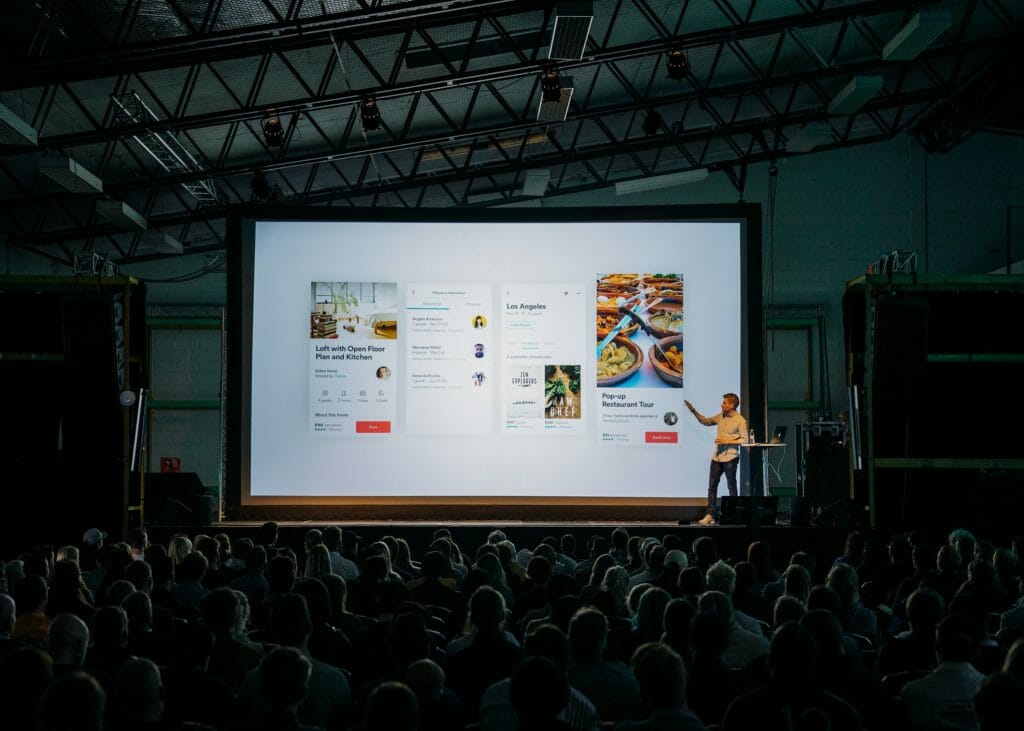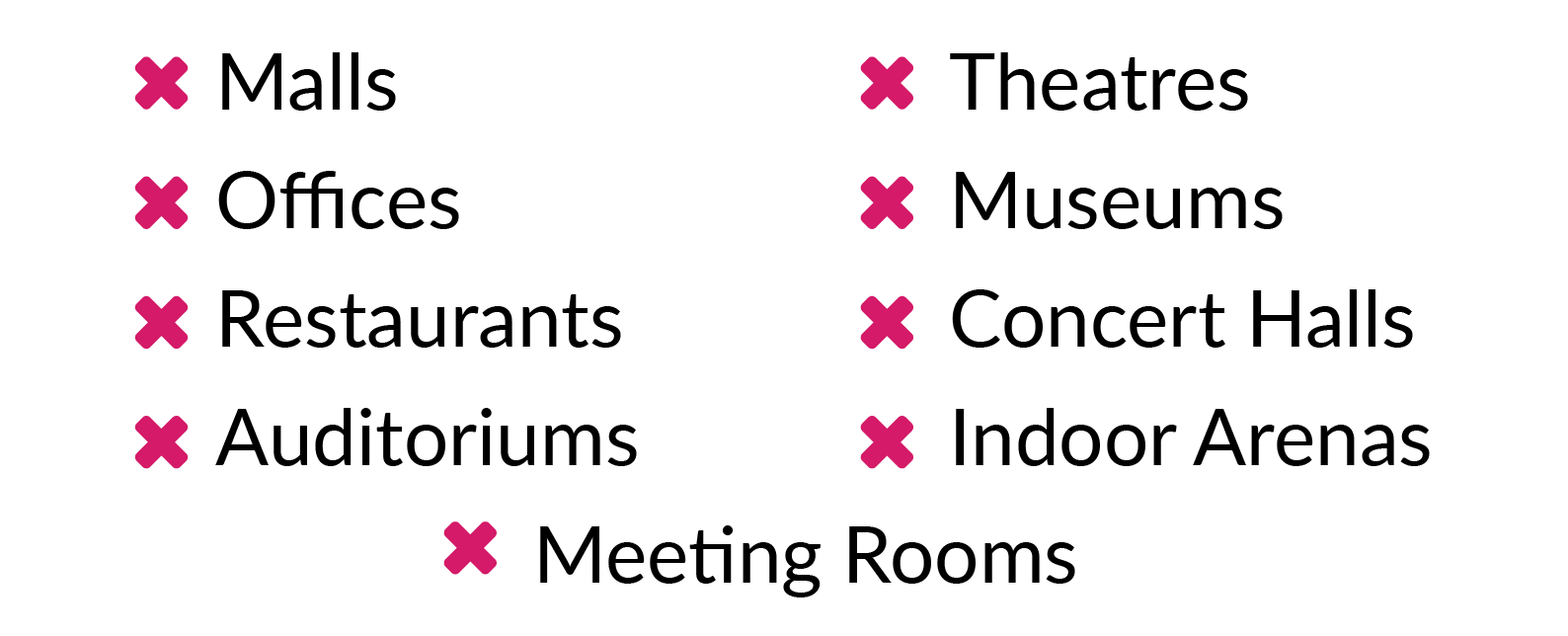How to Legally Live Stream Your Event
Video live streams of your event and sessions are simple to set up, entertaining to watch, and most importantly, accessible to a remote audience anywhere in the world. It’s also unedited, unplanned, and unprocessed content being broadcasted live. There’s lots of potential for using live streaming technology to engage attendees who can’t join you onsite. However, with great power comes great legal implication.
Before jumping on board, it’s important to know how to live stream your event without unintentionally falling victim to privacy or copyright infringement. Just because it is your event doesn’t mean you automatically have the right to use the venue, copyrighted material, or individual’s likenesses in live stream content you may profit from.
In the following article, we provide an overview of the legal risks that come with live streaming video at events, and how to protect yourself.

The Legality of Live Streaming Your Event
Live streaming events is another instance of technology far surpassing legal protocol. Today’s complex network of wirelessly connected cameras, screens, and devices offers endless opportunities to easily create and share live stream content.
The commercial and promotional opportunities for live streaming your event are growing with the popularity of hybrid events. However, the uncertainty surrounding the raw nature of the content threatens event planners’ potential to incorporate and monetize live stream content in post-event media, sponsorship packages, or other video opportunities.
This is why it’s also important to have a strategy when you live stream your event, to ensure you are abiding by the law.
Recommended Resource: 📹 If you’re planning to live stream, record and share your event content, you may need permission from your event stakeholders to release you from liability.
Download the free Release Form Template for Event Recordings now to ensure there are no limitations on your right to publish and share your event content!
For events, the legal aspects of streaming you should consider BEFORE you start include:
- public vs. private spaces and whether there is a reasonable expectation of privacy,
- every individual’s right to publicity, and
- intellectual property, or copyrighted material that may be captured in the stream.
Intellectual property includes copyrighted or trademarked material, trade secrets, sensitive company material, and any performance of a work of authorship, which includes but is not limited to keynote speeches, live performances, movie/t.v. clips, and background music.
But before we dive into the challenges and solutions of this tech, the ability to broadcast live video from any personal device to whoever is willing to watch raises the question: How do you police thousands of attendees who might be live streaming your event?
The answer is…you don’t.
But with the potential to accidentally commit copyright infringement and no easy way to moderate the experience, how can live streaming platforms be legally used at events?
The DMCA & Legal Onus of Live Streaming Your Event
The Digital Millennium Copyright Act’s (DMCA) “safe harbor” provision protects services and providers as long as they don’t have prior knowledge of the activity and quickly respond to the rights owners’ takedown requests. However, this poses a timing issue for events or performances that are affected by live streams. After live streaming your event, the takedown request could be applied to archived material, but the damage would have already been done in real-time.
The DMCA has been YouTube’s saving grace, though the platform has systems in place to catch and cut off broadcast copyright violators with regard to background music and embedded videos.
Big live streaming platforms like YouTube are not only protected by DMCA; their own ‘terms of services’ pushes the blame onto the host so policing the thousands of streams isn’t a priority for the providers. Unfortunately, all the legal onus on the host of the stream puts event planners into the line of fire.
Capturing the Venue

A good place to start understanding the legality of live streaming your event is that it’s very similar to the legality of photographing or recording video at events. The location where the live streaming is taking place will play a factor, as well as indicate the reasonable expectation of privacy. If you’re not on company property, you’ll likely need to get a location release from the property owner in order to legally broadcast the venue space. This is probably included in your venue contract but it’s good to double-check.
What is Considered a Public Place?
The reasonable expectation of privacy refers to the illegality of photographing or recording someone on video, without their consent, while on private property and live streaming is no exception. If there is a reasonable expectation of privacy, such as in a personal office, closed meeting room, or private residence, live streaming your event without permission is a no-go. Whereas if you’re photographing, recording, or streaming in a public place (including conference halls, sports arenas, or concert venues) there is little to no legal action to be taken.
Since most events take place in what would be considered a public place, you’re in the clear, right? Well not so fast…
Recommended Resource: 📺 Are you planning to live stream your in-person event to a remote audience?
Learn how the member-based organization Peerscale broadened their reach by broadcasting in-person sessions to a remote audience, and seamlessly delivered virtual speaker presentations to their attendees onsite. And if you’re considering running a hybrid event, EventMobi’s hybrid event platform can help you.
Right of Publicity Restrictions
The distinction to be made for streaming in public and an important note for live streaming, in general, is the “right of publicity” which dictates that any recorded video that’s used for commercial or promotional purposes, requires the permission of individuals shown in the video. Therefore if you were to live stream your event with the intent to profit or promote, it and don’t obtain consent from those shown during the broadcast, those people could potentially sue you or your event.
There haven’t been any public examples of legal actions being taken with events over the “right of publicity” but the potential is very real. Avoiding legal complications could be as simple as including a release form as part of your registration or posting a crowd release notice outside the event space.
A crowd release isn’t as legally concrete as signed permission but it will notify attendees of what’s happening and allow them to leave if they don’t want to be a part of the broadcast. Ensure you notify attendees before the event that you will be broadcasting as well as periodically throughout the event to avoid any confusion or issues in the future.
Example crowd release:

Plan Ahead to Avoid Problems When Live Streaming Your Event
Once you have the location release and attendee’s consent forms posted or collected, the other red flag you’ll need to be wary of is any and all intellectual property that may be captured in your live stream. To best guard yourself against trademark or copyright infringement, check the area that will be visible in your stream for any screens, posters, logos, or artwork, and schedule your broadcast around performances, loud music, or sessions that may be covering sensitive material.
A best practice is to avoid high-traffic areas where attendees might not realize they’re being streamed because they may say or do something you’d rather not be affiliated with your event. This is where having a contingency plan would come in handy, such as having a secondary location to stream from with safe sight lines that are out of the way of your attendees.
At the end of the day, live streaming your event is generally legal if you’re careful to avoid copyrighted material and collect the appropriate consent and releases. However, in addition to the murky legal waters, the live element of live streaming carries inherent uncertainty.
Not having control over the content that’s being instantly transmitted to your trusting followers and potential leads is definitely something to consider. Despite the risks, ephemeral content and providers are rapidly gaining notoriety and followers. So do your due diligence and add another arm’s length to your social media reach.
When you decide that live streaming your event is the right choice, here is a checklist for what you should do to ensure you’re doing everything legally.
- Have the appropriate release forms and consent ahead of time eg. Crowd release form, location release, and written permission from featured individuals.
- Plan ahead and check the area surrounding where your stream will be taking place for posters, logos, artwork, and screens.
- Schedule the broadcast to avoid music or sensitive material in a session or presentation.
- Request written permission from speakers and performers before you include them as part of a stream and ensure they have the rights to all of their own material.
- Have a contingency plan, in case the original streaming area is compromised by copyrighted material or crowded by attendees.
Are you looking for a single vendor who can support you with the right mix of event management software and live stream, video production and support services for your next event 👀?
Book your personalized demo of EventMobi to discover how you can easily deliver your best event yet!
